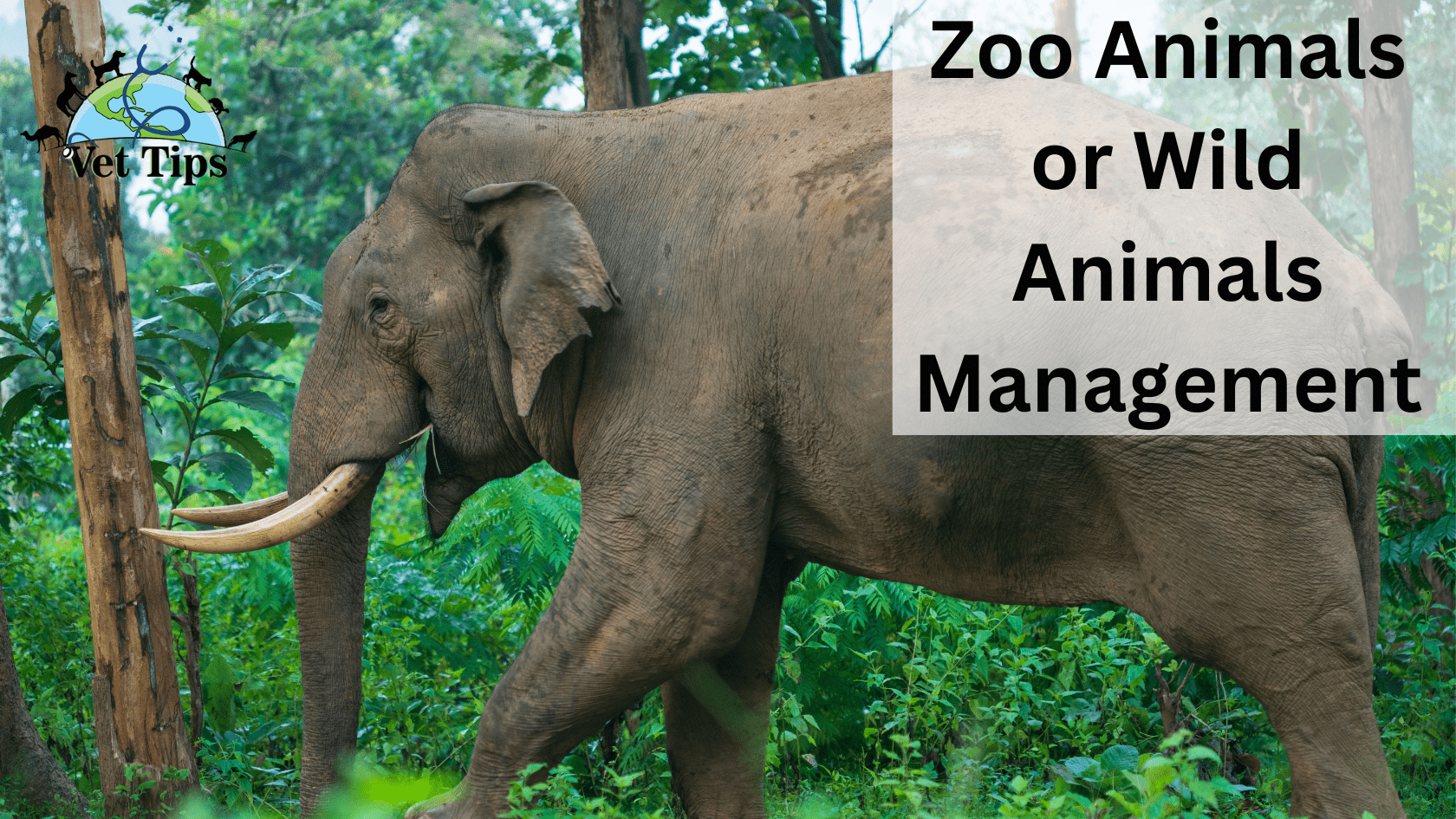The management of zoo animals or wild animals is a difficult task that involves careful consideration of a variety of issues. These factors include the welfare of the animals, the success of conservation initiatives, and the safety of the public. In this piece, we will delve into the complexities of zoo animal management as well as the management of wild animals. We will address the difficulties that are encountered as well as the methods that are utilized in order to achieve a balance between these two crucial components. Our goal is to present an in-depth discussion of this matter that is also simple to grasp, and we intend to accomplish this by sharing stories that are both interesting and relevant.
What is Zoo Animal or Wild Animal Management?
The practices and procedures that are utilized in the care of animals in captivity, such as those found in zoos and wildlife sanctuaries, as well as the management of wild animals in their natural habitats, are referred to as zoo animal management or wild animal management, respectively. It entails making sure the animals are healthy and happy, fostering conservation initiatives, and catering to the requirements of the general public in addition to the need of the animals themselves.
The Challenges of Zoo Animal or Wild Animal Management
Animals in captivity, whether at a zoo or in the wild, present their keepers with a unique set of challenges. Let’s take a look at some of the most prevalent challenges that people face:
Animal Welfare
When it comes to the care of animals, whether in captivity or in the wild, the animals’ well-being should always come first. In order to ensure their physical and mental well-being, it is vital to provide them with suitable enclosures, sufficient nourishment, and veterinary treatment. It can be a substantial difficulty to strike a balance between the requirements of the animals, the expectations of the audience, and the available resources.
Conservation and Breeding Programs
There are a lot of zoos and organizations that focus on animals that play an important part in conservation efforts, particularly for endangered species. It is essential, for the purpose of ensuring the continued existence of these species over the long term, to put into action productive breeding programs and to maintain genetic diversity. However, in order to successfully manage breeding programs and reintroduction attempts, extensive planning and coordination among the various stakeholders is required.
Public Education and Engagement
Zoos and wildlife parks frequently take on the role of teaching institutions, helping to spread knowledge about the significance of protecting wildlife populations. It is possible that educating the public about the natural behaviours and requirements for conservation that animals have can be an effective technique in cultivating empathy and support for the preservation of wildlife. However, finding a happy medium between educational content and entertaining content can be a challenging endeavor.
Guidelines for Zoo Animal or Wild Animal Management
In order to solve the issues that have been raised thus far and to ensure the efficient management of animals in zoos or in the wild, certain rules and best practices should be adhered to, including the following:
Animal-Driven Approach
It is essential to give top priority to the health and happiness of the animals. It is important that enclosures and habitats be created to cater to the physiological, behavioral, and social requirements of the animals. It is helpful in promoting natural behaviors and mental stimulation to enrich an individual’s environment with things like games, puzzles, and other natural stimuli as well as toys.
Collaboration and Partnerships
Collaboration among zoos, wildlife organizations, and conservation groups is necessary for the successful management of zoo animals as well as wild animals. The exchange of information, experience, and resources can result in the creation of conservation projects that are more successful, better animal care methods, and expanded educational opportunities for the general public.
Conservation-focused Breeding Programs
The preservation of genetic variety and the health of species across time need to be the top priorities of breeding operations. It is absolutely necessary for there to be coordination between institutions in order to prevent inbreeding and to keep populations healthy. The ultimate objective should be to relocate animals back into their original habitats wherever this is possible.
Research and Monitoring
For the purpose of making educated management decisions, ongoing study and monitoring of zoo animals and wild animals are both crucial components. The ability for managers to take suitable measures and change their operations in accordance with the behavior, health, and ecological demands of the animals requires an understanding of those needs.
FAQs: Zoo Animals or Wild Animals Management
Let’s address some of the most frequently asked issues regarding the management of zoo animals or wild animals:
Are animals in zoos happy?
Animals in the custody of zoo employees are provided with the highest standard of care that is humanly possible. Even though animals in zoos do not have the same level of autonomy as their counterparts in the wild, respectable zoos place a high priority on animal welfare and make it a point to meet both the animals’ physiological and psychological requirements. They make sure the animals have suitable environments, offer them with activities that enrich their lives, and give them veterinary attention to keep them healthy.
Why are some animals kept in captivity?
A: There are many different motivations for keeping animals in captivity, including study, teaching, and conservation efforts. Breeding programs can be made possible thanks to the presence of endangered species in captivity, which serves both as a protection against extinction and as a source of potential offspring. Zoos are also extremely important in terms of educating the general public about the importance of wildlife conservation and motivating individuals to take steps to safeguard animals in their natural environments.
How are wild animals managed in their natural habitats?
The management of wild animals in their natural habitats centers on conservation work, the protection of ecosystems, and the reduction of potential conflicts between humans and wildlife. This requires actions such as the protection of habitats, the implementation of anti-poaching programs, the monitoring of animals, and the participation of local communities. The ecological balance must be preserved, and protection must be provided to wild animal populations for their continued existence in the long run.
Are there regulations governing zoo animal or wild animal management?
To answer your question, yes, the administration of zoo animals as well as wild animals is governed by legislation and guidelines in a number of countries. These regulations include topics including animal care, the design of enclosures, breeding programs, and permits for wildlife management. To continue conducting business in an ethical and responsible manner, compliance with these standards is very necessary.
How do zoos contribute to conservation?
There are a variety of ways in which zoos assist to conservation. They do this through providing financing for research, habitat restoration, and activities to combat poaching. This helps support in-situ conservation efforts. Ex-situ conservation is also practiced by zoos, specifically through the management of breeding programs for endangered species and the participation in reintroduction operations. Additionally, zoos motivate individuals to have a good effect and educate the public about the significance of conservation through the dissemination of information.
Can animals be successfully reintroduced into the wild?
The process of reintroducing domesticated animals back into their natural environments is complicated and calls for careful planning and deliberation. The likelihood of success is determined by a number of factors, including the ecological requirements of the species, the quality of the environment, and the availability of prey. To improve the likelihood of a reintroduction program being effective, it is essential to do appropriate assessments, as well as training and monitoring before and after the program is implemented.
Tell us in the comments how you like our article, “Zoo Animals or Wild Animals Management”
For source file click here
For similar posts like this click here








